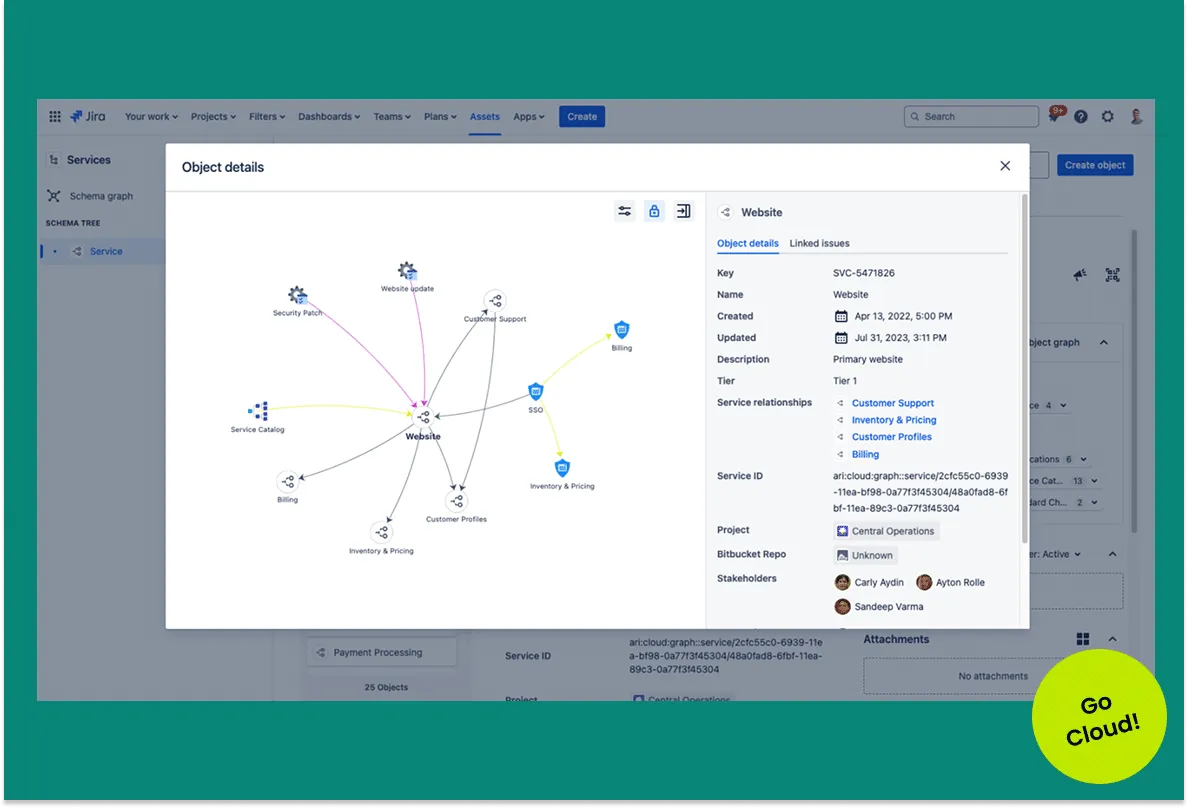Choosing the right Jira Service Management (JSM) plan is a critical decision for IT and operations teams. Each tier—Standard, Premium, and Enterprise—offers a different level of capability depending on your team’s size, complexity, and requirements. Standard provides a reliable foundation with essential ITSM tools, Premium builds on that with AI-powered automation and unlimited incident handling, and Enterprise adds advanced scalability, governance, and dedicated support. Understanding how these plans compare will help you decide which version aligns best with your organization’s needs.
Comparison Chart

Current Price Per User

Differences in Cloud Plan
Standard
AI and Automation
Standard includes core automation with 5,000 rule runs per month. These rules reduce repetitive tasks and keep service workflows moving, but the plan does not include AI features such as virtual agents or AIOps.
Incident and Change Management
Teams on Standard can manage unlimited alerts, with alert data retained for one year. Up to 100 major incidents can be tracked each month. Change management includes automated risk assessments, approvals, and deployment tracking, making this plan suitable for straightforward service operations.
Asset and Configuration Management
Standard does not include asset or configuration management, meaning organizations must rely on external tools if asset tracking and dependency mapping are important to their workflows.
Security and Administration
Standard supports up to 20,000 agents per site with 250 GB of storage. It includes 9/5 regional support but no uptime SLA. Administrative features are limited compared to higher tiers, and enterprise-grade controls like sandbox environments, IP allowlisting, and release tracks are not available.

See the relationships between your assets in a dependency map inside JSM Premium.
Premium
AI and Automation
Premium expands automation to 1,000 rule runs per user per month and introduces advanced AI. The Virtual Agent handles up to 12,000 assisted conversations per year, resolving common issues without human involvement. AIOps powers advanced incident management by grouping alerts, prioritizing critical issues, and automatically drafting post-incident reviews.
Incident and Change Management
Premium removes the cap on major incidents, supports unlimited postmortems, and retains incident data for three years. Teams gain access to incident templates, automatic incident creation, and enhanced change management with deployment gating, automated workflows, and a visual change calendar.
Asset and Configuration Management
Premium includes a service and asset repository capable of tracking 50,000 objects, with the option to expand further. It also offers asset discovery, dependency mapping, and infrastructure health analysis—features that help teams reduce risk and improve visibility.
Security and Administration
Premium provides unlimited storage, a 99.9% uptime SLA, and 24/7 support for critical issues. Enterprise-focused tools like IP allowlisting, sandbox environments for safe testing, and release tracks for managing cloud updates are included. These features make Premium a strong fit for organizations operating at scale.

Change calendar inside of Jira Service Management shows upcoming changes,
freeze and maintenance windows.
Enterprise
AI and Automation
Enterprise gives teams unlimited automation rule runs, providing maximum flexibility for scaling workflows. Like Premium, it includes the Virtual Agent and advanced AIOps, but adds higher thresholds with more AI credits per user and a larger pool of indexed objects.
Incident and Change Management
Enterprise mirrors Premium’s unlimited incident handling but extends retention to five years. It also supports advanced incident escalation options through manual, automated, and API-driven processes. Change management includes all Premium features, with added resilience for high-scale operations across multiple sites.
Asset and Configuration Management
Enterprise offers the same powerful asset management as Premium—50,000 objects with discovery, dependency mapping, and infrastructure analysis—but makes these features available across multiple sites. Data management options in Enterprise are also in open beta, preparing teams for greater control over asset data governance.
Security and Administration
Enterprise is designed for organizations with the highest governance needs. It includes unlimited sites (up to 150), unlimited storage, and a 99.95% uptime SLA. Support is provided 24/7 by a dedicated senior team, ensuring faster resolution across all issues. Enterprise also integrates directly with Atlassian Guard, providing single sign-on, SCIM provisioning, multiple identity providers, and external customer SSO without requiring an additional subscription. For large-scale global operations, Enterprise delivers unmatched stability, compliance, and administrative oversight.

AI suggests an incident summary to accelerate the PIR process
Which Jira Cloud Plan is Best for Your Company?
For small to mid-sized teams with straightforward needs, Standard offers an affordable entry point with reliable ITSM features and automation. Premium is best suited for organizations that are scaling quickly, managing high incident volumes, or requiring advanced AI, asset management, and stronger SLAs. Enterprise is ideal for large, global organizations that need multiple sites, advanced security, dedicated support, and long-term data retention.
When Should You Upgrade Plans?
Teams often start on Standard and upgrade to Premium once they encounter limits around automation, incident handling, or asset visibility. Moving to Enterprise makes sense when governance, compliance, and global scale become essential—especially for organizations with thousands of agents, multiple sites, or strict uptime requirements.
Speak with an Atlassian Partner to See Which Plan is Right for Your Team
If you’re weighing Standard, Premium, or Enterprise, an Atlassian Partner can help you compare costs, test features, and plan for future growth. At Seibert Solutions US, our experts provide tailored recommendations based on your team’s size, complexity, and goals.


